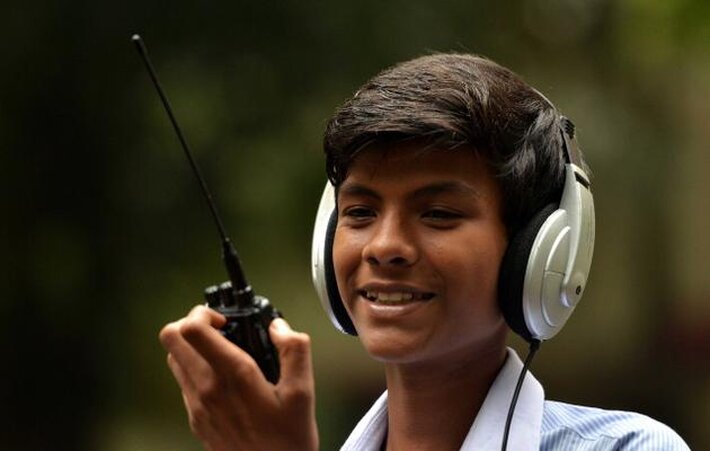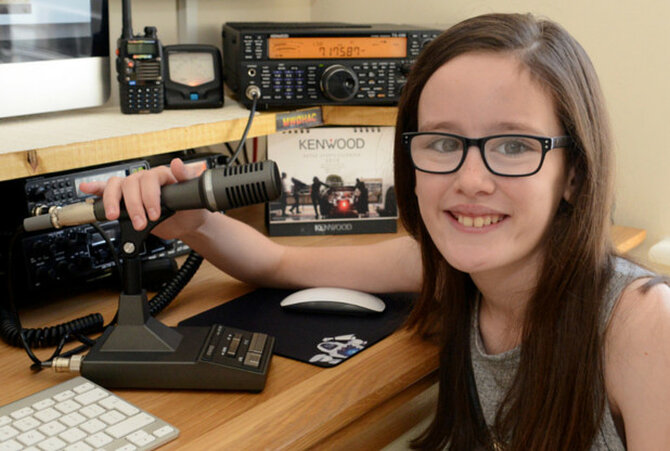Amateur Radio Repeater Communications
This activity introduces the concept of repeater communications and provides practice in its use.
Introduction
Amateur Radio repeaters provide the infrastructure required, for Line-Of-Sight (LOS) radios, to communicate around the city, the state, the country and even overseas. They operate on permanent, fixed channels within the VHF/UHF Amateur Radio bands; are located on high-spots, like city skyscrapers and mountain tops; are fully automatic, unattended stations; catering for either analog or digital signals, and sometimes both, and they are issued with their own callsigns.
Amateur Radio repeaters are generally installed and maintained by local Amateur Radio clubs, as a free service to all Amateur Radio operators in the area. In times of natural disaster, Amateur Radio repeaters may be used exclusively for civil emergency traffic in the area.
Because of their often lofty location, they can have a very wide coverage area, up to several hundred kilometres.
Duplex Operation
Repeaters work using split frequency, or duplex, operation. They simultaneously receive a signal on one frequency and re-transmit the same signal on another frequency. Careful RF design ensures that their powerful transmitter does not interfere with their sensitive receiver, even if the frequency split is only 600kHz. Some repeaters cleverly use diplexers so that they need only one antenna.
Tone Access
Repeaters only transmit when they receive a signal on their input frequency. However, because analog repeaters usually have a very wide receiver capture area and no Digital Carrier Detect (DCD) mechanism, they are more susceptible to receiving Radio Frequency Interference (RFI). It would be very distracting to anyone monitoring a repeater to hear it transmitting every time it received some RFI. So, to differentiate legitimate signals from RFI, analog repeaters often use a simple security access mechanism called Continuous Tone Controlled Squelch System (CTCSS). Effectively, all this means is that your radio must transmit a continuous, sub-audible, access tone to identify you as a legitimate repeater user.
Repeater Tail-End Timer
Repeaters keep transmitting for a short time, even after the input signal has disappeared. The time period is set by a Tail-End Timer. The reason for this repeater function is that sometimes mobile signals are affected by mobile flutter, caused by multi-path fading, or rapid fluctuations in path loss, caused by intermittent shielding. If the repeater was to stop transmitting instantly when this occurred: All receiving stations would not only hear the flutter on the input signal, but also experience the even more disruptive sound of their squelch circuit activating. Instead, the repeater keeps transmitting for a while to give the input signal time to recover. A side effect of this function is that if you briefly press the PTT button on your radio: When you release it, you will hear the repeater transmitting for a second or so longer. This gives you an indication that you are in range of the repeater: It can hear you and your can hear it. Unfortunately, many operators use this test far too frequently, which is why you often hear many, short, unmodulated transmissions on a repeater channel.
Repeater Timeout
Repeaters have another mechanism for averting being locked out by continuous RFI or, just as annoying, an operator sitting on the microphone PTT button while driving along, oblivious to the fact the radio is transmitting. Repeaters will not transmit continuously. They have a timeout, maybe several minutes or more, and will then transmit a warning tone and shutdown. They will start up again when the input signal disappears. So, to avoid getting timed out, you need to let the repeater "drop out" before starting your own transmission, or periodically if you intend to have a long over.
Internet Radio Linking Project
Some analog repeaters, in fact all around the world, are linked by the Internet Radio Linking Project (IRLP). This means that you can connect to your local IRLP repeater and have a QSO with a station connected to their local IRLP repeater, somewhere else. According to the IRLP website: "IRLP operates a worldwide network of dedicated servers and nodes offering very stable worldwide voice communications between hundreds of towns and cities." To use IRLP you have to identify your intention to do so on your local IRLP repeater - when it is not it use by others - then enter the code of a remote IRLP repeater on your radio's Dual Tone Multi Frequency (DTMF) keyboard. Wait while your connection is announced at both ends and listen to see if the remote repeater is in use. While using IRLP you need to press the PTT button then wait a few seconds before speaking. When finished, simply hang up the connection by pressing the PTT button and sending code 73. Note: We are not covering digital P25 and DMR repeaters and talk groups here.
Repeater Operation
Since a repeater usually has an audience of many stations, listening, and possibly some waiting for a chance to use it, repeater usage is normally kept brief. Long CQ calls are replaced with: "This is <Your Callsign> listening". To call another station just say: <Their Callsign>, <Your Callsign>. During the morning and afternoon "drive time" sessions on a repeater, possibly many stations will want to call in with their brief message to others before arriving at work or at home. So overs are kept brief. Of course, there are instances of extended QSOs on repeaters during quiet times.
Radio Programming for Repeater Access
To use a repeater to extend the range of your hand-held radio, you must configure your radio for duplex operation. The transmit and receive frequencies of local repeaters and their CTCSS access tone frequencies are published by local Amateur Radio associations and may also be conveniently available on mobile device apps, such as RepeaterBook.
To program a modern VHF/UHF radio to use a local repeater, first read the manual: Look for information about repeaters, duplex operation, frequency splits and tone coding. Every radio is different.
Preparation
You will need:
- A hand-held, VHF/UHF Amateur Radio
Activity
- First outline the lesson: We will first program a hand-held VHF/UHF radio to use a local repeater, then we will each have a turn using it.
- Briefly present sufficient information about VHF/UHF repeater communications.
- Program the radio for a local repeater channel, including receive frequency, repeater split and CTCSS access tone.
- Test the radio by calling: <Your Callsign> Listening.
- When someone answers explain you have a group of students who would like to have a go on the repeater and practice their operating procedures.
- Students take it in turns to have a QSO and log the QSO in their log books.
- While that is happening, show how to move around the room to obtain the best operating position for this repeater.
- If time permits, and you have practiced this function, connect to a remote IRLP node and repeat the above process.
References


Homework
- Ask your parents if you can drive up to a mountain summit where you know there is a repeater installation.
- Take a picture or draw a sketch of all the different types of antennas there.
- Ask an Amateur Radio operator to identify the likely purpose of each type.

